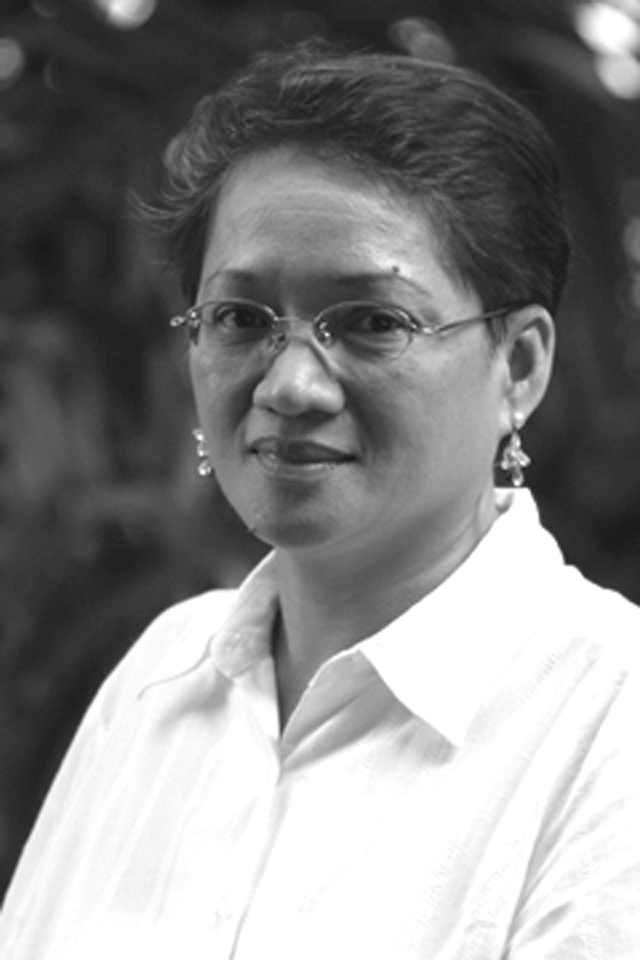Criticizing Ricardo Cardinal Vidal
By: Malou Guanzon Apalisok
- 7 years ago


Malou Apalisok
When writing my piece for this corner, I am often plagued by a “cold start”: that condition when a writer’s brain is hit as if by cold temperature that coming up with a lead can be described in automotive parlance — cold start, that is, starting the engine after a cold spell. One turns on the ignition several times to generate heat.
More than a cold start, writing a piece about late Archbishop Emeritus Ricardo Cardinal Vidal is made even more difficult because so many good things have already been written about him that to add more would be a superfluity. His kindness and generosity, patience and fatherly ways have been the subject of countless articles after he died Wednesday morning last week.
In 2000, I joined the younger crop of church beat reporters for the Union of Catholic Asian News (UCAN). That was a politically charged period that saw former president Joseph Estrada charged for accepting bribes from gambling lords. I was practically a newbie even if I had logged in more than 15 years of media experience so I maintained a professional distance when interviewing RCV.
Cardinal Vidal’s sympathy for then-president Estrada had placed him at odds with a large number of local religious and church-based organizations who openly campaigned for his ouster. At that time, then Manila Archbishop Jaime Cardinal Sin categorically called for Estrada’s resignation in the aftermath of the aborted impeachment trial that eventually sparked an Edsa Dos.
Instead of coming out with a categorical stance similar to the statement of other Catholic bishops, Cardinal Vidal convened the so-called Presbyteral Council of Cebu which at once issued “guidelines for the faithful as they pursue different paths in the search for truth.” Some members of the local clergy then called him out, with some doubting whether his support for the embattled president was a concession to the rumored Pagcor donation for some church projects.
The scuttlebutt at that time was that Erap offered to give P10 million to a church project via Pagcor. As far as I can recall, the report was unverified and it remained that way until I came across a Facebook post by my friend, Babbit Ybanez, who outed the story last October 21 or after a decade and a half.
According to Babbit, “When Erap was President, he was ‘close’ to the Archbishop of Cebu. Perhaps to curry favor with the good cardinal, he (Erap) offered a grant of P10 million to the Cebu Uniting for Sustainable Water CUSW knowing that the Cardinal was CUSW’s adviser. When Cardinal Vidal learned about it, he told CUSW, ‘Don’t accept it.’ And that was that, we did not accept it.”
I don’t recall RCV coming out to defend himself against the ugly rumor, but now I can understand why he chose to let it pass. Had he debunked the report, he would have placed Erap in a graver situation and dragged members of a civil society group whose only fault was to have him as adviser.
In 2004, when President Gloria Arroyo figured in the Garci tapes scandal, Cardinal Vidal was again pressured to make a categorical statement in response to pressures from the political opposition and some religious sectors. Again, he declined, opting instead to being “pastoral, rather than popular.” I pressed him on this particular stance and his answer was both simple and direct. “I don’t take sides because if I did, I won’t be able to talk to either side.”
(In the aftermath of Edsa Dos, Cardinal Vidal was able to talk and give Erap advice. In the days leading to the feast of the Holy Child in 2001, Erap stepped down from power).
In any case, I wrote opinion that criticized him based on his perceived political leanings and it is on this score that I wish to add my own piece about RCV’s appeal.
Journalists who call out public officials for abuse of power and perceived missteps usually end up as persona non-grata.
The clergy isn’t spared from this malady. I know of some who would treat me rudely because of something I said or wrote, but I did not sense even a hint of antagonism from RCV each time I join press conferences in his residence.
In fact, the professional distance that I tried to cultivate melted away when the press con would turn very casual, with RCV cracking jokes and teasing younger female colleagues about their single blessedness. The “Lolo Cardi” frame that Lino Parone lovingly wrote (The Mutation of a Cardinal, CDN, October 23, 2017) moved me.
The last time I spoke with RCV was in December 2015 while documenting the construction of the IEC Pavilion for the 51st International Eucharistic Congress.
Having attended several IECs in the past, I asked about his experience in attending previous IECs held in different venues. He recalled that in India where the Congress was held in different sites, they were able to see many tourist attractions.
We both had a good laugh at his recollection.
In hindsight, I think his answer says a lot about his singular gift of not saying or suggesting ill about anybody.
Instead of telling they were distracted by having to hop from one location to another, he put it humorously by saying tourist spots dotted their itinerary. Da uy. Makahilak man pud ta ani. Godspeed, Ricardo Cardinal Vidal.
Read more...
